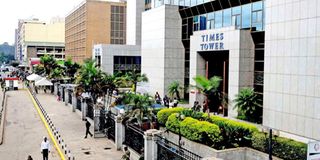Court puts burden of proof of payments on taxpayers

Times Tower, Kenya Revenue Authority (KRA) head office in Nairobi.
What you need to know:
- The tax dispute pitted Kenya Revenue Authority and Pearl Industries, a firm that deals in fabrics.
- Kenya Revenue Authority was demanding Sh472 million from the company for corporate tax and VAT.
The Kenya Revenue Authority (KRA) has received a shot in the arm after the High Court ruled that the burden of proving payment of taxes lies with the taxpayer.
The ruling overturns a decision of the Tax Appeals Tribunal, which had placed the burden on KRA.
Justice David Majanja made the ruling in a tax dispute pitting KRA and Pearl Industries, a firm that deals in fabrics. KRA was demanding Sh472 million from the company for corporate tax and VAT between January 2012 and November 2017.
Pearl Industries had objected to the tax assessment and successfully challenged the demand before the Tribunal. The taxman had rejected some of the manufacturer’s purchases and claims of input VAT by alleging that no purchases were done.
According to KRA, some of the company’s suppliers were non-existent or were issuing it with bogus invoices, ETR receipts in what the Commissioner described as an illegal VAT refund scheme where the manufacturer was either a beneficiary or an accomplice.
“The Respondent failed to counter this with satisfactory evidence, thus the issue of fraud remained uncontested and thus proved. I, therefore, find and hold that the respondent failed to discharge its burden of proof as a taxpayer,” the Justice Majanja said.
He held that KRA’s findings that the document issued by the suppliers were bogus.
KRA argued that some of the suppliers did not sell or deliver any goods but have instead devised a scheme where they only print fictitious invoices and ETR receipts, which they sell to other companies to inflate their inputs.
“In this case, the pendulum of proof swung three times; the first was upon the Respondent, which it did by providing the documents requested by the Commissioner; the second shifted the Commissioner, who after reviewing the documents challenged their authenticity. This meant that the burden of proof finally swung back to the Respondent to prove that the Commissioner was wrong in its position and overall findings,” the Judge said.




